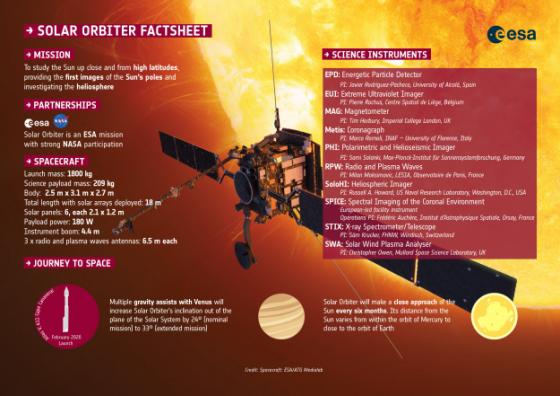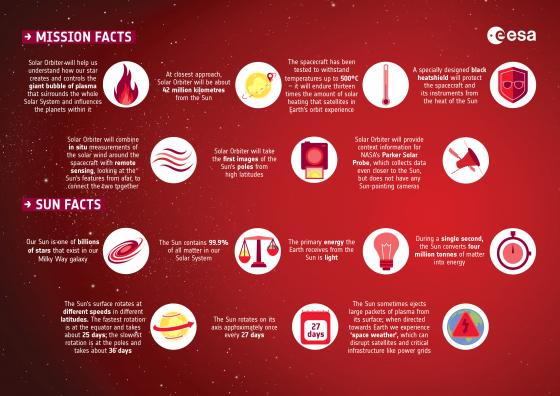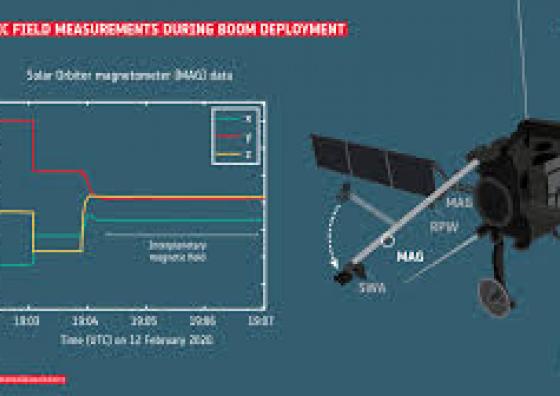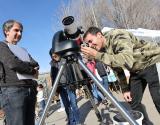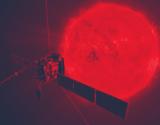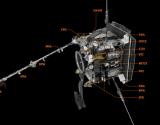These infographics show information about the Solar Orbiter mission, some facts about the mission and the Sun, and its different instruments.
The Solar Orbiter mission
The Solar Orbiter will study the Sun in detail thanks to the combination of scientific instruments it has and the orbit it will draw around. The probe will get closer to the Sun –up to a distance of 42 million kilometres, meaning that the parts of the Solar Orbital that look towards the Sun will have to be exposed to temperatures over 500ºC, while the parts remaining in the shadow will be around -180ºC. During this mission, the orbit will increase its inclination towards the ecliptic up to 30ºC, which will enable researchers getting high resolution images of the solar poles.
The Solar Orbiter probe will enable the monitoring of a specific area of the Sun as well as the planning of specific campaigns remotely. According to Àngels aran, researcher from the HPSWG group, “the obtained results by Solar Orbiter will enable us to understand the physics that connect the star with the interplanetary environment and therefore adjust the current models of space weather”. “Also –she adds-, the combination of Solar Orbiter observations with the obtained data from other probes in the interplanetary space, and in terrestrial environment, will provide us with a stereo view of the same situation”. The Sun is a medium-mass star in a large and stable state of its evolution. However, it undergoes periodic eruptions in the short run and which are hard to predict, known as solar activity. The dominance of the Sun gets beyond the solar atmosphere, through the solar wind, leading to the heliosphere, which includes the interplanetary space. Understanding the coupling of the Sun and the heliosphere is essential to understand the functioning of our solar system. The different conditions of the solar wind and solar activity are the main motors of the space weather. Space meteorology refers to the response of the space environment to solar storms, which can have a significant impact on current society. For instance, solar activity, such as solar eruptions and coronal mass ejections, can cause gusts of energetic particles causing damage in satellites and affecting navigation systems.
These episodes of solar energetic particles, mainly heavy electrons, protons and ions, limit the human activity in space. These are hard to predict due the incomplete knowledge of involved basic physical processes and the lack of observations in the heliosphere.
A team from the Institute of Cosmos Sciences of the University of Barcelona (ICCUB-IEEC) has worked on one of the ten facilities of the Solar Orbiter. This instrument is called SO/PHI (Polarimetric and Helioseismic Imager), which will provide high precision measures of the magnetic field of the solar photosphere. The team is formed by José Maria Gómez-Cama, Àngels Aran, Manuel Carmona, José Bosch i David Roma.
